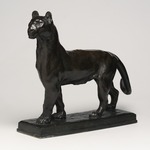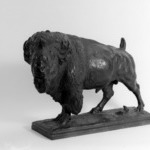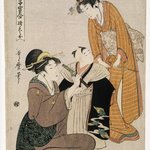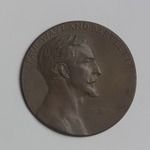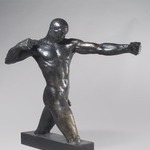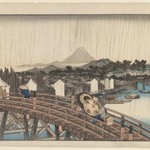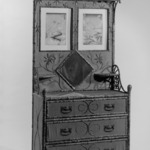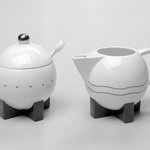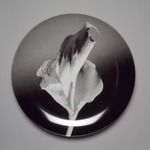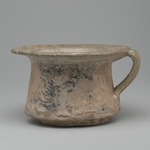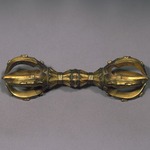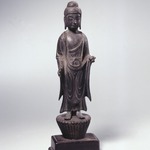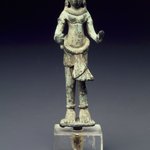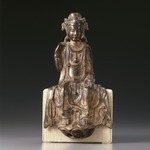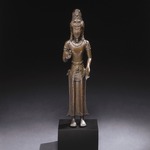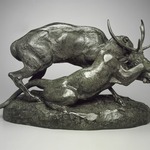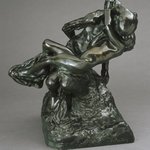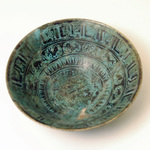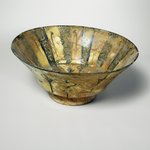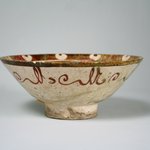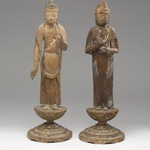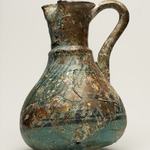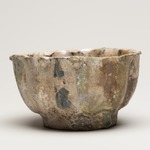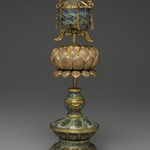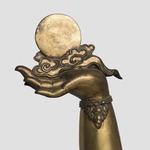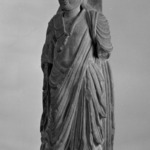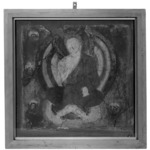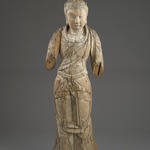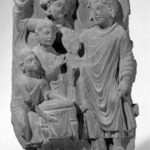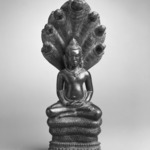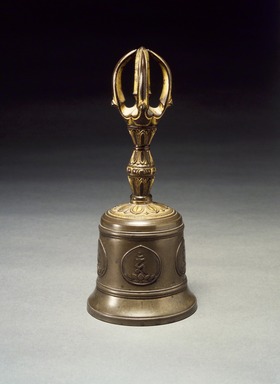
Samaya Gokorei (Five-Pronged Vajra Bell)
Asian Art
On View: Asian Galleries, Southwest, 2nd floor
A stylized representation of a lightning bolt, called a vajra, has long been an important emblem of power in Buddhist teachings and art. Vajras usually look like two-sided tridents, with prongs on both ends of a shaft, but their heads can have one, three, five, or six prongs. Esoteric Buddhism is called Vajrayana, or the “way of the vajra,” because the lightning bolt represents the active, forceful approach to enlightenment, one that cuts through ignorance and fear.
In esoteric Buddhist practice, initiated worshippers often hold a vajra and a hand bell, known in Sanskrit as a ghanta. The vajra symbolizes action or method, and the bell represents wisdom. Buddhists believe that these two complementary qualities must be combined and balanced in order to gain insight and progress toward enlightenment.
In esoteric Buddhist practice, initiated worshippers often hold a vajra and a hand bell, known in Sanskrit as a ghanta. The vajra symbolizes action or method, and the bell represents wisdom. Buddhists believe that these two complementary qualities must be combined and balanced in order to gain insight and progress toward enlightenment.
MEDIUM
Bronze with traces of gilding
DATES
13th century
PERIOD
Kamakura Period
DIMENSIONS
Height: 7 1/8 in.
Diameter at base: 3 in. (show scale)



COLLECTIONS
Asian Art
ACCESSION NUMBER
1989.145
CREDIT LINE
Gift of Bernice and Robert Dickes
EXHIBITIONS
MUSEUM LOCATION
This item is on view in Asian Galleries, Southwest, 2nd floor
CAPTION
Samaya Gokorei (Five-Pronged Vajra Bell), 13th century. Bronze with traces of gilding, Height: 7 1/8 in. Brooklyn Museum, Gift of Bernice and Robert Dickes, 1989.145. Creative Commons-BY (Photo: Brooklyn Museum, 1989.145.jpg)
IMAGE
overall, 1989.145.jpg. Brooklyn Museum photograph
"CUR" at the beginning of an image file name means that the image was created by a curatorial staff member. These study images may be digital point-and-shoot photographs, when we don\'t yet have high-quality studio photography, or they may be scans of older negatives, slides, or photographic prints, providing historical documentation of the object.
RIGHTS STATEMENT
Creative Commons-BY
You may download and use Brooklyn Museum images of this three-dimensional work in accordance with a Creative Commons license. Fair use, as understood under the United States Copyright Act, may also apply.
Please include caption information from this page and credit the Brooklyn Museum. If you need a high resolution file, please fill out our online application form (charges apply).
For further information about copyright, we recommend resources at the United States Library of Congress, Cornell University, Copyright and Cultural Institutions: Guidelines for U.S. Libraries, Archives, and Museums, and Copyright Watch.
For more information about the Museum's rights project, including how rights types are assigned, please see our blog posts on copyright.
If you have any information regarding this work and rights to it, please contact copyright@brooklynmuseum.org.
RECORD COMPLETENESS
Not every record you will find here is complete. More information is available for some works than for others, and some entries have been updated more recently. Records are frequently reviewed and revised, and we welcome any additional information you might have.
